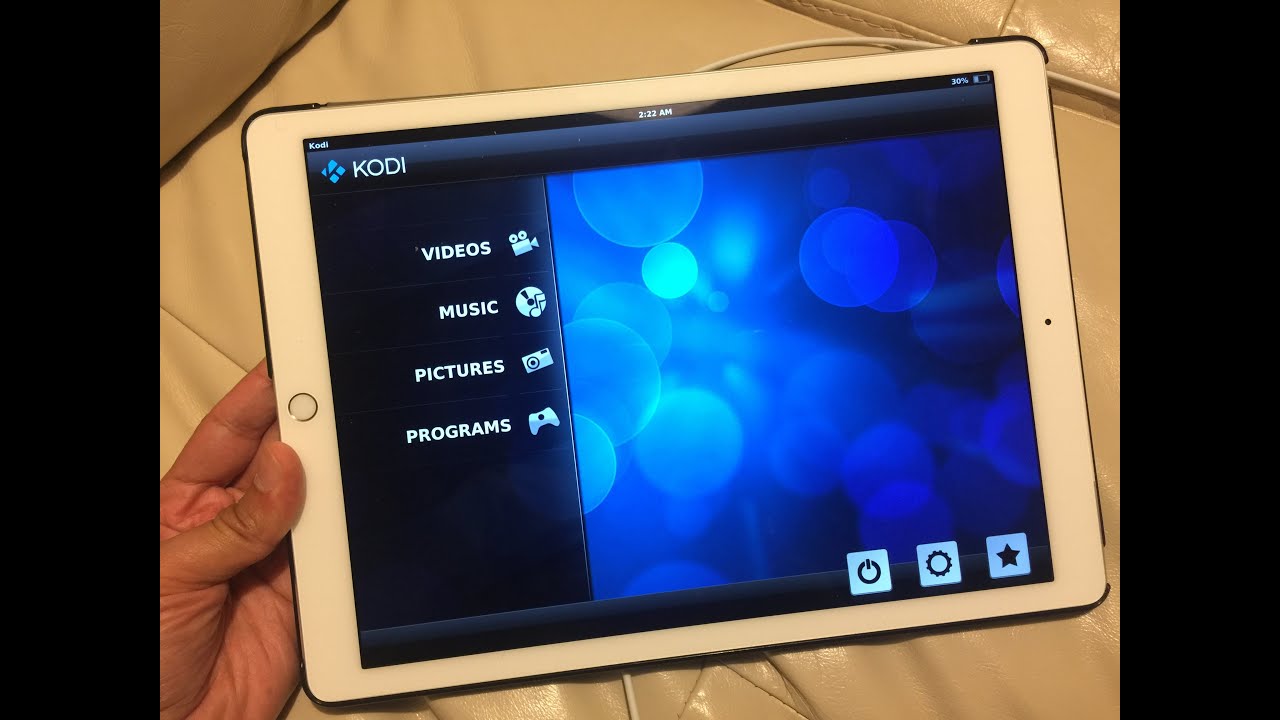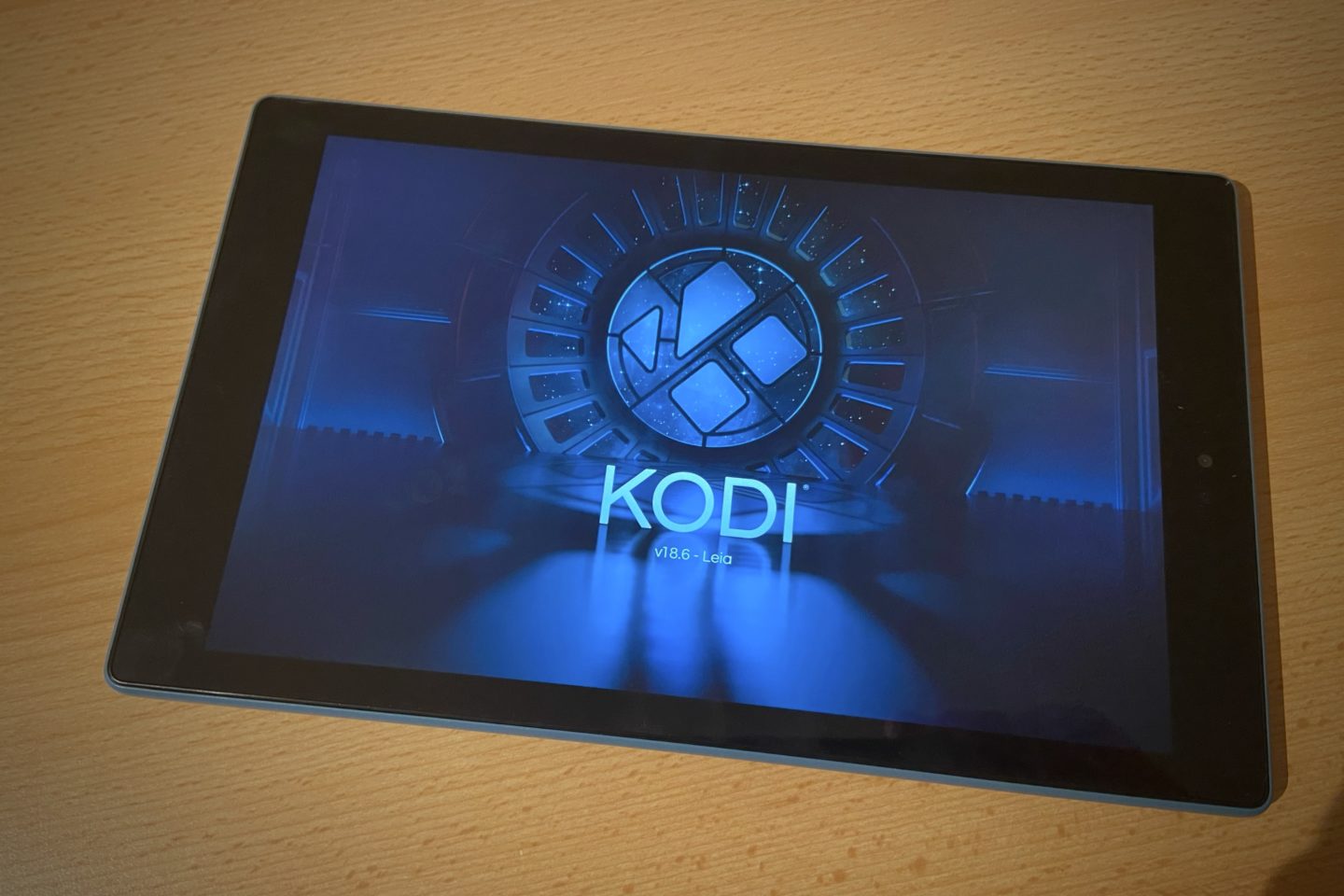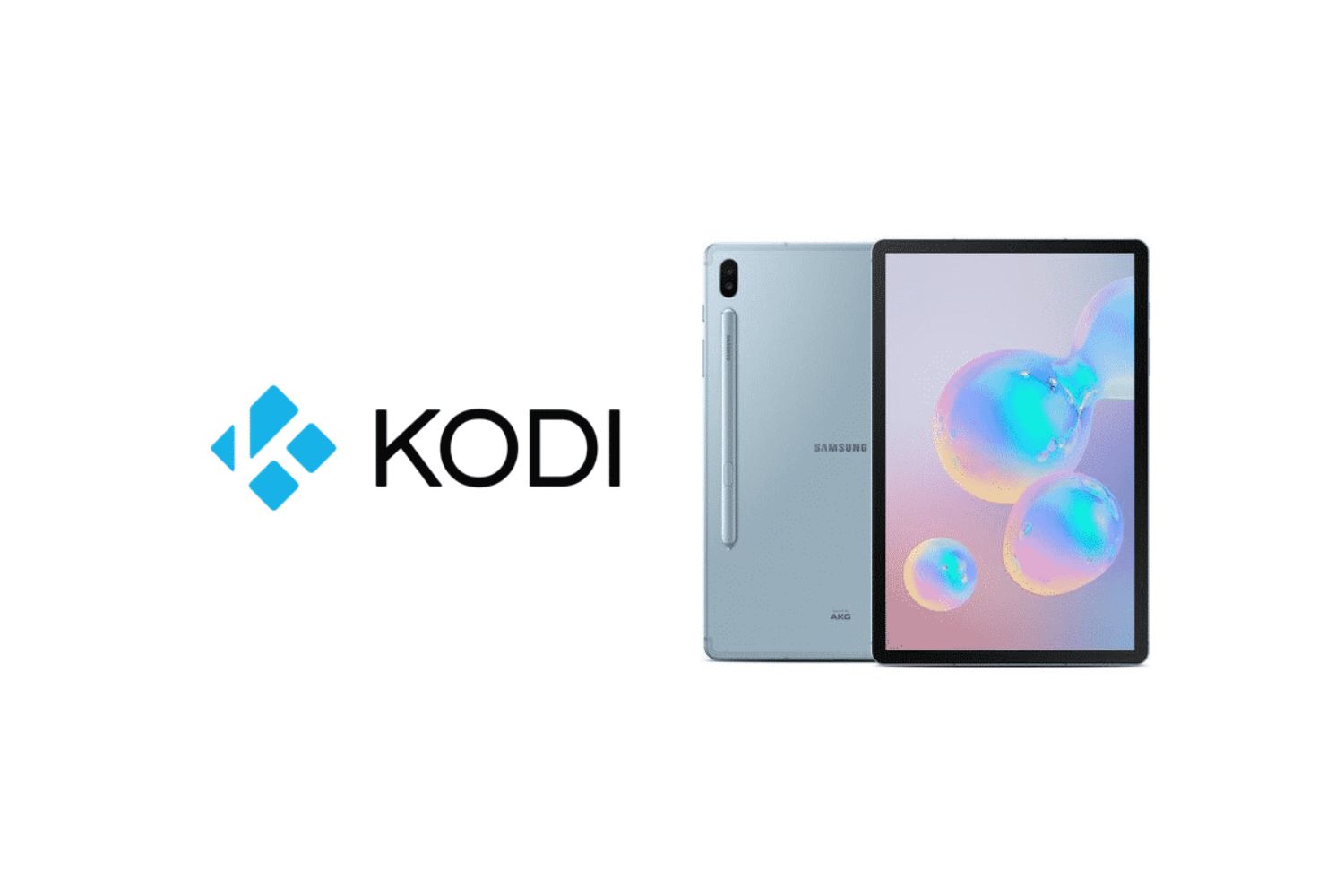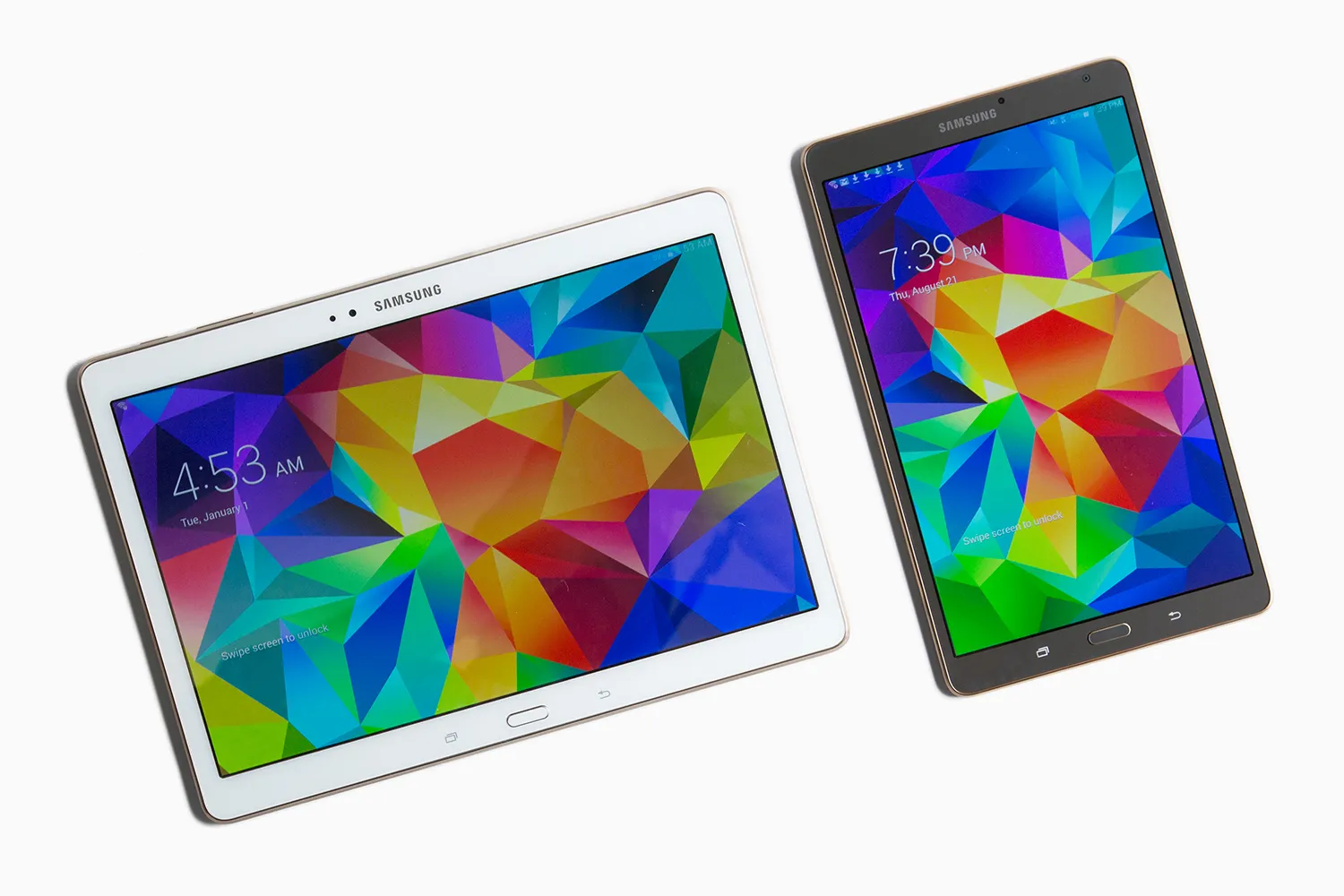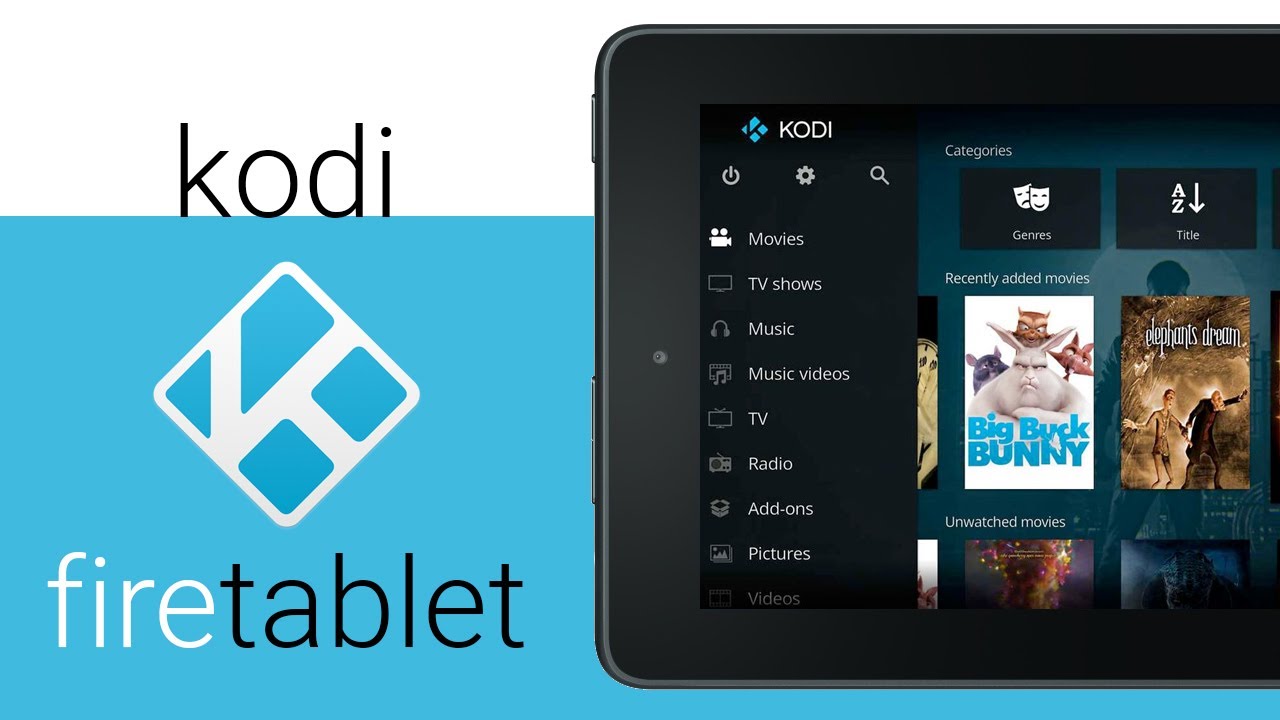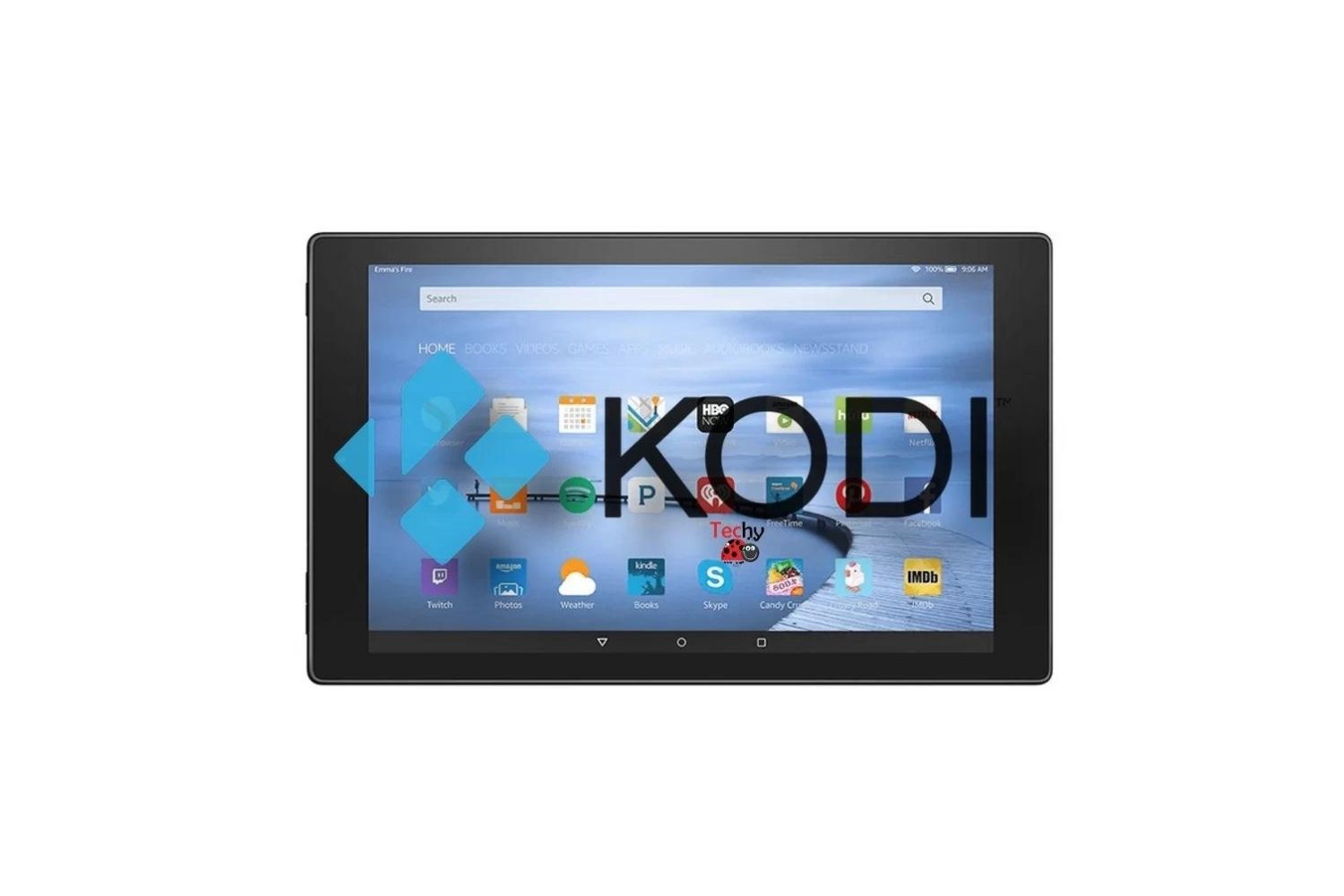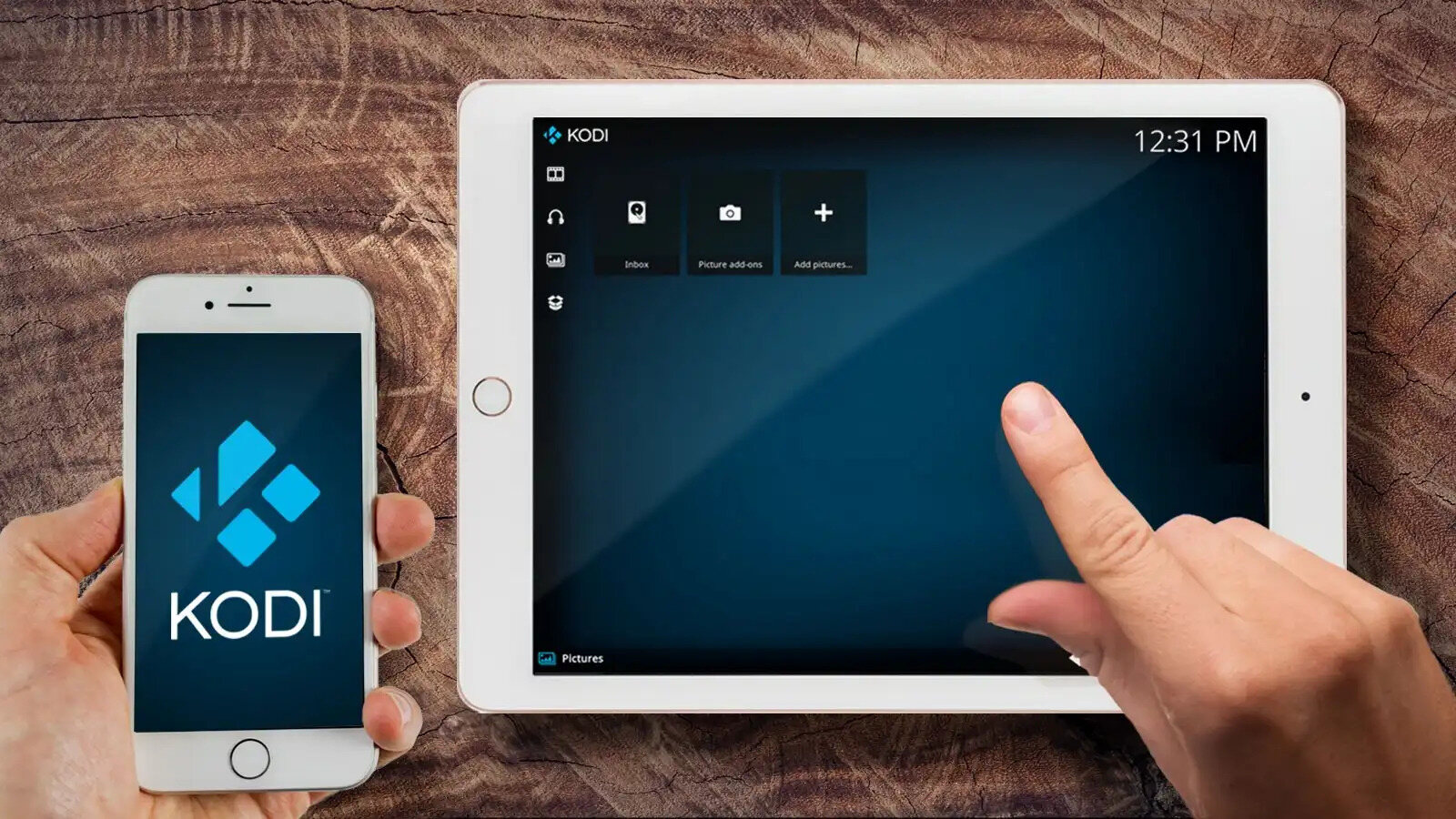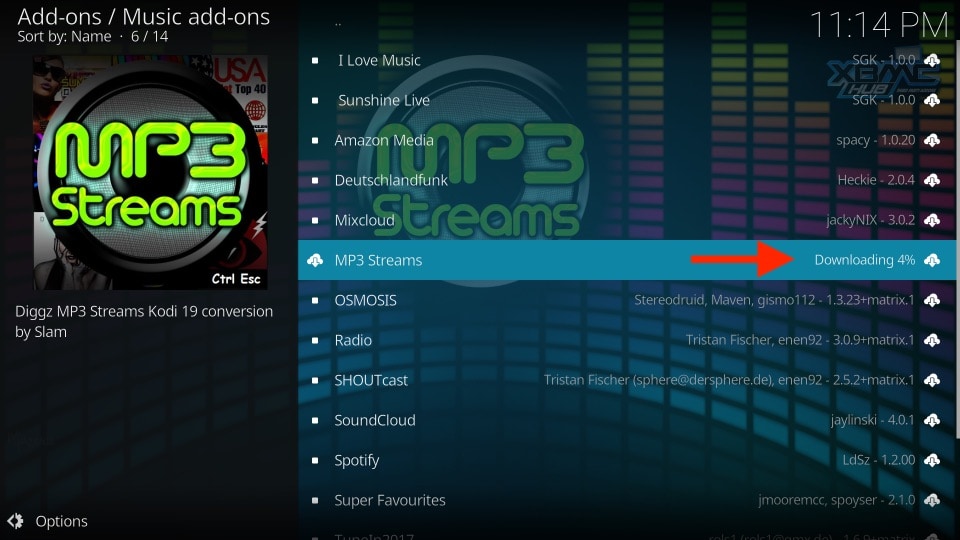Introduction
Welcome to this guide on how to get Kodi on your tablet! Kodi is a popular open-source media player that allows you to stream your favorite TV shows, movies, music, and more on various devices. With Kodi, you can access a wide range of content and customize your viewing experience.
In this article, we will walk you through the process of installing Kodi on your tablet and provide you with tips on how to configure it to suit your preferences. Whether you’re a movie buff or a music lover, Kodi offers a versatile platform to indulge in your entertainment needs.
Before we dive into the installation process, let’s take a quick look at some of the key features of Kodi. Understanding its capabilities will help you make the most of this powerful media player.
First and foremost, Kodi supports a wide range of file formats, allowing you to play your favorite media files hassle-free. It boasts an intuitive and user-friendly interface, making it easy to navigate and access your content. Kodi also supports various streaming protocols, enabling you to watch your favorite shows and movies from popular streaming services.
One of the greatest strengths of Kodi is its extensive library of add-ons. These add-ons expand the functionality of Kodi, allowing you to access additional content, apply customizations, and enhance your overall experience. Whether you want to install add-ons for popular streaming services, music streaming, or even game emulators, Kodi has a vast collection to choose from.
Moreover, Kodi has a robust community of developers and enthusiasts who constantly contribute to its development and offer ongoing support. This vibrant community ensures that Kodi is regularly updated, delivering new features, bug fixes, and security patches. It’s this active community that makes Kodi a reliable and evolving platform.
Now that we have a good understanding of Kodi and its features, let’s move on to the next section, where we’ll discuss the prerequisites before you get started with the installation process on your tablet.
Section 1: Understanding Kodi and its Features
Kodi is an open-source media player that provides a feature-rich platform for streaming and organizing your favorite media content. It supports various file formats and allows you to enjoy your movies, TV shows, music, and photos on multiple devices, including tablets.
One of the standout features of Kodi is its user-friendly interface, which makes it easy to navigate and access your media library. The main screen of Kodi, known as the “Home” screen, displays different menu options such as Videos, Music, Pictures, Add-ons, and more. Each menu option provides access to different media categories, allowing you to quickly find and play your desired content.
One of the key strengths of Kodi is its extensive library of add-ons. Add-ons are additional software components that enhance and expand the functionality of Kodi. You can think of add-ons as apps that allow you to access additional content and services within Kodi. There are thousands of add-ons available for Kodi, catering to various interests and preferences.
For movie and TV show enthusiasts, there are add-ons that provide access to popular streaming services, such as Netflix, Amazon Prime Video, and Hulu. These add-ons allow you to seamlessly stream your favorite shows and movies directly from within Kodi. There are also add-ons for live TV streaming, sports streaming, and even anime streaming.
If you’re a music lover, Kodi offers add-ons that enable you to stream music from popular services like Spotify, Pandora, and SoundCloud. These music add-ons provide access to vast libraries of songs and offer features such as personalized playlists and recommendations.
In addition to streaming services, Kodi also supports add-ons for customization and utility purposes. You can find add-ons that provide weather updates, news feeds, gaming platforms, and even educational content. The possibilities are nearly endless, and you can tailor your Kodi experience to suit your specific interests and needs.
Furthermore, Kodi allows you to organize your media library efficiently. You can create playlists, mark your favorite movies and TV shows, and even import metadata and artwork to enhance your media collection. Kodi also supports features like automatic library scanning, which ensures that your media library stays up-to-date with the latest additions.
With its extensive features and add-on support, Kodi offers a versatile and customizable media player for your tablet. Now that you have a better understanding of Kodi and its capabilities, it’s time to move on to the next section, where we’ll discuss the prerequisites before installing Kodi on your tablet.
Section 2: Before Getting Started
Before you begin the installation process of Kodi on your tablet, there are a few important things to consider and prepare. This section will guide you through the necessary prerequisites to ensure a smooth and successful installation.
Firstly, it’s crucial to check if your tablet meets the minimum system requirements for running Kodi. While Kodi is compatible with a wide range of devices, it’s important to ensure that your tablet has sufficient processing power and storage capacity to handle media playback and add-on installations.
Next, make sure your tablet is running an up-to-date operating system. Kodi is compatible with various operating systems, including Android, iOS, Windows, and more. Check for any available updates for your tablet’s operating system to ensure compatibility with the latest version of Kodi.
Additionally, it’s recommended to have a stable and reliable internet connection on your tablet. Streaming media and accessing add-ons require a robust internet connection to ensure smooth playback and efficient content retrieval. Consider connecting to a Wi-Fi network or using a cellular data plan with sufficient bandwidth to support your media streaming needs.
Furthermore, ensure that your tablet has sufficient storage space to accommodate Kodi and its media files. As you start using Kodi and installing add-ons, your media library may grow in size, requiring adequate storage capacity. If your tablet has limited internal storage, consider using an external storage device or cloud storage solutions to expand the available space.
It’s also a good practice to back up any important data on your tablet before proceeding with Kodi installation. While the installation process itself does not typically involve data loss, it’s better to be safe and protect your valuable files and information.
Another crucial consideration is the source from which you will download Kodi for your tablet. It’s recommended to download Kodi directly from the official Kodi website or through trusted app stores such as Google Play Store or Apple App Store. Avoid downloading Kodi from unofficial sources, as it may contain modified versions or malware that can compromise your tablet’s security.
Lastly, familiarize yourself with the legal implications of using Kodi. While Kodi itself is a legal platform, some add-ons may provide access to copyrighted content. It’s important to use Kodi and its add-ons responsibly, respecting copyright laws and only accessing content that you have proper authorization for.
By considering these essential aspects before getting started, you can ensure a smooth and hassle-free installation process of Kodi on your tablet. Now that you’re prepared, let’s move on to the next section, where we’ll discuss the step-by-step process of installing Kodi on your tablet.
Section 3: Installing Kodi on Your Tablet
Installing Kodi on your tablet is a straightforward process that involves downloading the official Kodi app from the appropriate app store or website. In this section, we will guide you through the step-by-step instructions to install Kodi on your tablet.
For Android tablet users, follow these steps:
- Open the Google Play Store app on your tablet.
- Search for “Kodi” using the search bar at the top of the screen.
- Select the official Kodi app from the search results.
- Tap the “Install” button to begin the installation process.
- Once the installation is complete, you can launch Kodi from your app drawer.
If you have an iOS tablet, such as an iPad, the process to install Kodi is slightly different:
- Open the App Store on your iPad.
- Search for “Kodi” using the search icon located at the bottom of the screen.
- Select the official Kodi app from the search results.
- Tap the “Get” button and then “Install” to start the installation process.
- Once the installation is complete, you can find the Kodi app on your home screen.
If you have a Windows tablet, you can follow these steps:
- Visit the official Kodi website (www.kodi.tv) using a web browser on your tablet.
- Navigate to the “Downloads” section of the website.
- Select the “Windows” option.
- Download the appropriate version of Kodi based on your tablet’s architecture (32-bit or 64-bit).
- Once the download is complete, locate the installer file on your tablet and run it.
- Follow the on-screen instructions to complete the installation process.
For tablets running other operating systems, such as Linux or macOS, you can visit the official Kodi website and follow the instructions specific to your operating system.
After successfully installing Kodi on your tablet, you can launch the app and begin exploring its various features and functionalities. In the next section, we will discuss how to configure Kodi on your tablet to personalize your media playback experience.
Section 4: Configuring Kodi on Your Tablet
Once you have Kodi installed on your tablet, it’s time to configure the settings to optimize your media playback and personalize your experience. In this section, we will guide you through the essential configurations and settings you should consider when using Kodi on your tablet.
Firstly, it’s recommended to set up your media sources in Kodi. These sources can be local files stored on your tablet or network-attached storage (NAS) devices. To add media sources, go to the Kodi home screen and select “Videos” or “Music” from the main menu. Then, navigate to “Files” and select “Add videos” or “Add music” to add your desired sources. Follow the on-screen prompts to specify the location of your media files.
Next, it’s important to customize the appearance and layout of Kodi to suit your preferences. Kodi offers various skins, which are visual themes that change the overall look and feel of the interface. To change the skin, go to the Kodi home screen, select “Settings” or “System,” and navigate to “Interface” or “Skin” settings. From there, you can choose your desired skin and customize its settings, such as menu layouts, color schemes, and more.
Furthermore, take some time to explore the available Kodi add-ons and install the ones that align with your interests. You can access the add-on repository by going to the Kodi home screen, selecting “Add-ons,” and then selecting “Add-on browser” or “Get add-ons.” From the add-on repository, you can browse different categories and install the add-ons that provide the content or functionality you desire. Remember to only install add-ons from trusted sources to ensure your tablet’s security.
Additionally, Kodi offers a vast array of settings that allow you to fine-tune your media playback experience. Explore the settings menu by going to the Kodi home screen, selecting “Settings” or “System,” and navigating through the available options. Some key settings to consider include audio and video settings, subtitle settings, library settings, and network settings. By adjusting these settings, you can optimize the playback quality, enable subtitles, manage your media library, and configure network settings for streaming purposes.
Moreover, Kodi provides powerful customization options through advanced settings. You can access the advanced settings by going to the Kodi home screen, selecting “Settings,” and then selecting “System.” From there, navigate to “Settings level” and choose “Expert” or “Advanced” to unlock advanced settings. Explore these options cautiously, as they offer granular control over various aspects of Kodi’s functionality, including hardware acceleration, caching, and playback options.
Lastly, don’t forget to regularly update Kodi and its add-ons. As mentioned earlier, Kodi has an active community of developers who constantly release updates and improvements to the software. To check for updates, go to the Kodi home screen, select “Settings” or “System,” and navigate to the “System information” or “Addon browser” section. From there, you can check for available updates and install them to ensure you have the latest features and bug fixes.
By following these configuration steps, you can tailor Kodi to your liking and create a personalized media playback experience on your tablet. In the next section, we will explore the vast world of Kodi add-ons and discuss how you can further customize and enhance your Kodi experience.
Section 5: Exploring Kodi Add-ons and Customizations
One of the most exciting aspects of using Kodi on your tablet is the vast library of add-ons available for customization and enhancing your media playback experience. In this section, we will explore the world of Kodi add-ons and discuss how you can customize Kodi on your tablet.
Kodi add-ons are like mini-applications that extend the functionality of Kodi. They allow you to access additional content, features, and services within Kodi, making it a versatile media player. There are thousands of add-ons available, covering various genres and interests.
To explore and install new add-ons, go to the Kodi home screen, select “Add-ons,” and then select “Add-on browser” or “Get add-ons.” From there, you can browse through the available categories, such as video add-ons, music add-ons, program add-ons, and more. Each category contains numerous add-ons for you to choose from.
For movie and TV show enthusiasts, there are add-ons that provide access to popular streaming services such as Netflix, Hulu, and Amazon Prime Video. These add-ons allow you to stream movies, TV shows, and even live TV from within Kodi. You can search for specific content, explore genres, and create personalized watchlists.
If you’re a music lover, there are add-ons that allow you to stream music from popular services like Spotify, Pandora, and SoundCloud. These add-ons provide access to vast libraries of songs, allowing you to create playlists, discover new artists, and enjoy your favorite tunes.
Kodi also offers add-ons for sports enthusiasts, gaming enthusiasts, news junkies, and more. You can find add-ons that provide live sports streams, gaming platforms, news headlines, educational content, fitness videos, and even weather updates. The wide range of add-ons ensures that you can customize Kodi to suit your specific interests and preferences.
Customizing Kodi doesn’t stop at add-ons. Kodi also allows you to customize the overall look and feel of the interface through skins. Skins are visual themes that change the appearance of Kodi, offering different layouts, color schemes, and styles. You can install and switch between different skins to find the one that best suits your taste.
Add-ons and skins can be easily installed from the official Kodi repository or from trusted third-party sources. However, it’s important to exercise caution and only install add-ons or skins from reliable sources to ensure your tablet’s security.
Remember to regularly update your add-ons and skins to benefit from the latest features and bug fixes. Kodi provides an update mechanism that allows you to check for add-on and skin updates and install them easily. Keeping your add-ons and skins up-to-date ensures a smooth and optimized Kodi experience.
By exploring the vast library of add-ons and customizing Kodi with skins, you can create a tailored media playback experience on your tablet. The next section will provide you with some useful tips and troubleshooting techniques to help you make the most of Kodi on your tablet.
Section 6: Tips and Troubleshooting
In this section, we will provide you with some useful tips and troubleshooting techniques to help you optimize your Kodi experience on your tablet.
1. Keep Kodi and Add-ons Up to Date: Regularly update your Kodi installation and add-ons to ensure you have the latest features, bug fixes, and security patches. Outdated versions may have compatibility issues or vulnerabilities.
2. Clear Cache and Purge Packages: Over time, Kodi can accumulate cache and unnecessary packages, which may slow down performance. Use the built-in maintenance tools within Kodi to clear cache and purge unnecessary files.
3. Manage Storage Space: If you’re running out of storage space on your tablet, consider removing media files or add-ons that you no longer use. You can also use external storage devices or cloud storage solutions to expand your storage capacity.
4. Utilize Backup and Restore: Kodi allows you to create a backup of your settings, add-ons, and media library. In case of data loss or if you want to transfer your Kodi setup to another device, having a backup can save you time and hassle.
5. Customize Keyboard or Remote Control: If you’re using a physical keyboard or remote control with your tablet, take advantage of Kodi’s ability to customize key mappings. This allows you to assign specific actions to different keys, providing a more convenient navigation experience.
6. Enable Subtitles and External Subtitle Sources: Kodi offers comprehensive subtitle support. You can configure Kodi to automatically download and display subtitles for your media. You can also connect Kodi to external subtitle sources, ensuring accurate and on-time subtitle availability.
7. Troubleshooting Common Issues: If you encounter issues with Kodi, such as buffering, playback errors, or add-on malfunctions, try the following troubleshooting steps:
- Check your internet connection for stability and bandwidth limitations.
- Restart your tablet and relaunch Kodi.
- Clear cache and purge packages as mentioned earlier.
- Disable any VPN or proxy settings that may interfere with Kodi’s streaming functionality.
- Reinstall problematic add-ons or consult the respective add-on’s support forums for assistance.
8. Join Kodi Communities: Engaging with the Kodi community can provide valuable insights, tips, and assistance. Join Kodi forums, social media groups, or online communities to connect with other users, share experiences, and seek help when needed.
Remember, while Kodi itself is legal, some add-ons may provide access to copyrighted content. It’s important to use Kodi responsibly, respecting copyright laws and only accessing content for which you have proper authorization.
With these tips and troubleshooting techniques in mind, you can enhance your Kodi experience, overcome any challenges you may encounter, and make the most of Kodi on your tablet.
Conclusion
Congratulations! You have now learned how to get Kodi on your tablet and unleash the full potential of this versatile media player. Kodi allows you to stream your favorite movies, TV shows, music, and more, all from the convenience of your tablet.
In this article, we covered the basics of Kodi and its key features. We discussed the prerequisites before getting started with the installation, and then walked you through the step-by-step process of installing Kodi on your tablet. We also delved into the various configuration options available, allowing you to personalize your Kodi experience.
We explored the vast world of Kodi add-ons, enabling you to access additional content and services based on your interests. We also highlighted the importance of keeping your Kodi installation and add-ons up to date, as well as providing troubleshooting techniques to help you overcome common issues.
Remember to use Kodi responsibly and respect copyright laws by only accessing authorized content. Additionally, always download Kodi and add-ons from trusted sources to ensure the security of your tablet.
Now that you have a solid understanding of Kodi and its capabilities, it’s time to dive in and start exploring the vast array of movies, TV shows, music, and more available at your fingertips. Customize your Kodi installation, discover new add-ons, and make the most of your entertainment experience on your tablet.
Enjoy your journey with Kodi and let the streaming begin!







